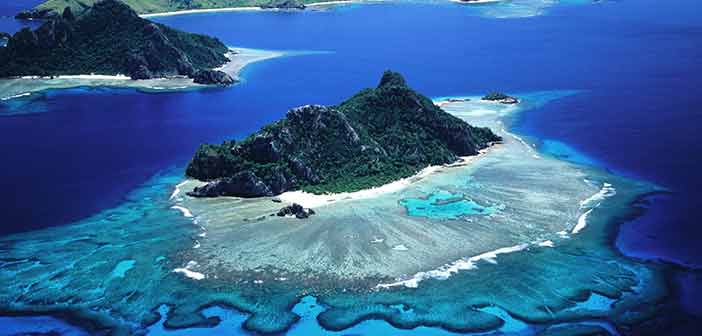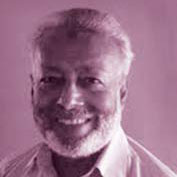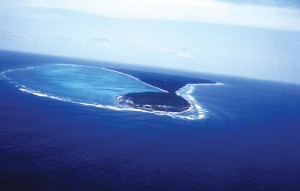
Lakshadweep is a Union Territory and the smallest, comprising of only one district. The distinct feature of this union territory is that it comprises 36 islands situated in the Arabian Sea in an area of 32sq.km. The islands are located at distances ranging from 220 to 440 km from Kochi, off the Kerala Coast. In all only ten islands are inhabited while the rest are barren.
A hundred thousand islands

Lakshadweep in Sanskrit and Malayalam means, “A hundred thousand islands”. The name was probably given to indicate the large number of islands in the group as people in the early days could not count all of them. Although the total area of the union territory is very small, its lagoon area extends to about 4,200 sq.kms. The territorial waters spread to about 20,000 sq.kms, while the economic zone is spread to about 4,00,000 sq.kms. As such Lakshadweep forms a large territory in strategic terms. It also has 17 uninhabited islands, of which four are newly formed islets and five are submerged reefs. The inhabited islands are Kavaratti, Agatti, Amini, Kadmat, Kiltan, Chetlat, Bitra, Andrott, Kalpeni and Minicoy. Bitra is the smallest of all having a population of only 271 persons as per the national census of 2011. The island of Bangaram has so far been considered uninhabited. However, during 2011 census it has been considered to be populated with 61 people.
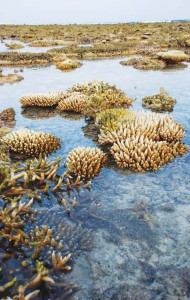
The Climate
Lakshadweep has tropical climate with the average temperature ranging from 27° C to 32° C. The hottest months are April and May when the average temperature rises to about 32° C. The climate though generally warm and humid is pleasant. During the months of June to October the south west monsoon is active in the area, which receives an average rainfall of about 10-40 mm during the entire monsoon. During monsoon, the sea is rough and the climate is generally not conducive for ship tourism, which is suspended during the months. Otherwise, people move from one island to another by ships and ferries. Diesel-based large power boats are used for travelling between islands and for carrying goods.
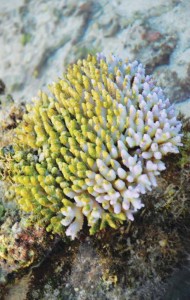
Wind remains light to moderate during the months of October to March. That is the period which is ideal for a visit to the islands as temperature remains moderate and light wind makes the environment pleasant. For last many years, Lakshadweep is connected with the mainland through air-service which operates from Kochi to Agatti. From Agatti to Kavaratti, which is the capital of Lakshadweep there is a regular helicopter service which facilitates quicker travel between the islands. Facilities for landing of helicopters are there on other islands too and depending on requirement the service is utilised.
Sir Charles Darwin Theory
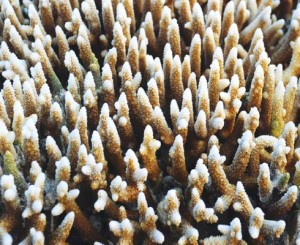
Geologically, the islands in Lakshadweep are coral atolls. There have been controversies about the formation of these coral atolls. From time to time different theories have been forwarded about the islands. However, the theory proposed by Sir Charles Darwin is considered the most accepted one. He postulated in 1842 that the process started with volcanic islands. Subsidence of volcanic islands resulted in the formation of fringing reefs and, continued subsidence resulted in upwards growth of the fringing reefs. Once the volcanic islands were completely submerged the atolls were formed encircling the lagoons. The coral atolls are ring-shaped coral reefs surrounding submerged tropical islands. Subsequently, due to the impact of waves, currents, wind, temperature fluctuation etc., on the reefs, the coral islands were formed. We need to understand that coral reefs are huge colonies of tiny animals that need sunlight to grow. These animals are associated with algae, which are plants with chlorophyll. They need sunlight to perform photosynthesis and the plants in turn provide food to the animals while they provide protection to the plants. Darwin’s theory is based on the fact that coral atolls grow as reefs in upward direction in search of sunlight. At the same time the ocean islands slowly sink below the sea surface. The main factors behind sinking are the cooling ocean crusts and the huge mass of the islands.
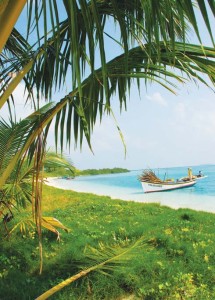
Since 1842 when Darwin proposed the theory, conclusive evidences were lacking to prove or disprove his theory. In fact some scientists gave the hypothesis that the atolls were only a thin layer of corals. Their idea was that there was nothing very deep as proposed by Darwin. However deep drilling was performed in 1953 in certain reefs, but not in Lakshadweep. The drilling confirmed the theory proposed by Darwin as it revealed the presence of volcanic rock about 1,400 metres below the presently existing reef top. Taking these findings into account, it is now accepted that atolls are reefs in the shape of ribbons with broad configuration of a closed shape which may not always be circular. The atolls may spread to several kilometers. Atolls enclose lagoons which may be about 50 metres or more deep. Thus, scientifically, the atolls represent the final stage of continuous growth of reef around a sinking extinct volcanic island in upward direction. The volcanic island had long disappeared from view. Occasionally, these islands are inhabited by people like in the case of Lakshadweep, Maldives, Polynesia, Micronesia etc.
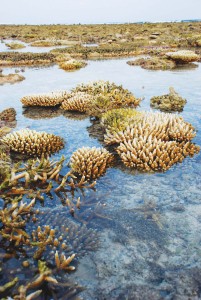
Influence of Islam
The early history of Lakshadweep is not properly documented; what is now considered as history of the islands are only legends. People believe that the first human settlement on the islands came up during the time of Cheraman Perumal, who was the last King of Kerala. It is believed that the King embraced Islam after coming in contact with some Arab merchants. Subsequently, he decided to travel to the holy city of Mecca for pilgrimage. He went out of the then capital, Cranganore (presently called Kodungallor) during the night and took to sea with the aim of reaching Saudi Arabia. On receiving the news of his disappearance, search parties were sent into the sea. One of the boats of the King of Cannanore was struck by a fierce storm and the boat was destroyed. Somehow the survivors could reach the island which is now called Bangaram. From Bangaram, the King’s men travelled to the nearby island of Agatti. When the weather became favourable, they travelled to the mainland. On their way back they could see other islands of the group. It is believed that after the return of the first party, another group of sailors and soldiers went in the same direction and discovered the island of Amini. They started living there. Legends say that small settlements established in the islands of Andrott, Amini, Kalpeni and Kavaratti. In due course of time, people from these islands moved and settled in other islands e.g. Agatti, Chetlat, Kadmat and Kiltan. Thus habitation started on the islands and became a permanent feature.
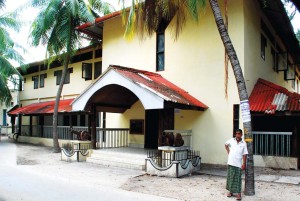
Islam reached Lakshadweep islands in the 7th century AD. It is believed that a person with the name Ubaidullah was in Mecca in the holy mosque. He fell asleep there and dreamt that Prophet Muhammad desired that he should travel to Jeddah, the port city and from there he had to travel to other places to spread the message of Islam. He followed the instruction and left Jeddah by sea route. His ship got wrecked in the journey but he miraculously survived and with the help of a plank he reached Amini island. There he started preaching the message of Islam. The headman of the island did not like that and ordered his exit from the island. But Ubaidullah did not oblige. In the meantime a young woman fell in love with Ubaidullah, who married her and gave her the name of Hameedat Beebi. The new development further infuriated the headman and he wanted to kill the couple. The headman with his supporters surrounded Ubaidullah and his wife to kill them. Ubaidullah called the almighty for help. Miraculously, the members of the group intending to kill him and his wife turned blind. That gave an opportunity to Ubaidullah and his wife to leave the island safely. When they left the island the headman and his companions regained their sight. Ubaidullah reached Andrott island, where he was met with similar opposition, but he finally succeeded in attracting people to Islam. Subsequently, he travelled to other islands and successfully propagated Islam. In the end, he returned to Andrott where he died and was buried there. The grave of Saint Ubaidullah exists on the island and is considered a sacred place. That is why preachers from Andrott travel to other places and they are highly respected in Malaysia, Myanmar, Sri Lanka, etc.
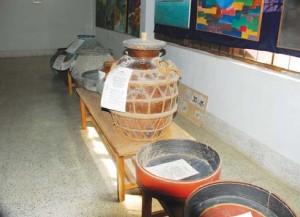
It is interesting to note that even after almost the entire population of the islands embraced Islam, the Hindu ruler of Chirakkal was having his sovereignty over. Later the islands went in control of the Muslim ruler of Arakkal. That development took place in the middle of the 16th century. But the Arakkal rulers were oppressive making it difficult for the people to accept them. In 1783, few people belonging to the Amini island went to meet Tipu Sultan at Mangalore. They requested him to take over the administration of the Amini group of islands. Tipu Sultan had good relations with Beebi (lady ruler) of Arakkal. However, after deliberations and insistence of the people of those islands, the administration of Amini group of five islands was given to him. The remaining ones remained under Arakkal’s rule. In 1799, the Battle of Seringapatam took place and Tipu Sultan was defeated. The islands which were under his rule were annexed by the East India Company, and Mangalore was made the administrative headquarters. In the year 1847, Andrott island was hit by a severe cyclone. The ruler of Chirakkal planned to visit the island to personally assess the damages there and to distribute relief. Sir William Robinson, an officer of the East India Company joined with the ruler for the visit. In Andrott, the ruler found it very difficult to fulfill the demands of the people living on the island. Sir Robinson offered the ruler a loan to finance the relief work. That was accepted and the arrangement continued for about four years. But with time the interest became huge. Then the English asked the ruler of Chirakkal to repay the loan with interest. The ruler could not oblige.

The British rule
As a consequence in 1854, the remaining islands were given to the East India Company for administration. That was how the entire Lakshadweep group of islands came under the British rule. The annexation of the Lakshadweep islands was an example of the political manipulations and methods adopted by the English to extend their control over the Indian territory. The English always considered their political and economic interests above the concept of good governance. Their main interest was in exploiting the islands, their people and the natural resources available there without bothering about the welfare of the people. With the same objective, the British notified the Lakshadweep Regulation in 1912, which conferred limited judicial and magisterial powers to the local Amins/Karanis. Restrictions for outsiders were also promulgated through the same regulation. During the entire British rule only few primary schools and few dispensaries were started for the local population. British rule continued till India became independent. The Government of India declared the islands a Union Territory in 1956. The name Lakshadweep was given to the Union Territory in 1973.
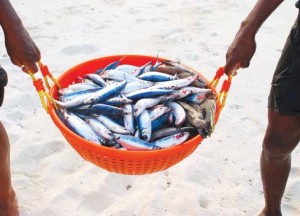
The islands also experienced the atrocities of the Portuguese. As we know, certain territories of the mainland India were occupied by the Portuguese. Hence, they regularly travelled between the territories they controlled and Portugal. On the way they used to halt at the Lakshadweep islands. During their halts they used to exploit the locals by way of forcibly taking their finely spun coir which was a much sought after item in shipping industry. Also, they used to loot vessels travelling in the vicinity of the islands. The local people were fed up due to that behavior of the Portuguese. In the early 16th century once a group of Portuguese mariners landed at Amini island. They wanted to forcibly take coir from there, but the locals had already planned something. They invited the Portuguese to have food before leaving. The invaders obliged willingly. The locals had mixed poison in the food served to the invaders and all of them died. After that incident, the Portuguese never invaded the islands.
Traditions and rituals
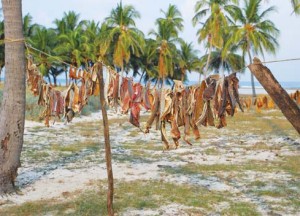
The 2011 census indicated that the population of the entire group of islands was 64,429. But the Union Territory sends one Member of Parliament to Delhi and elections are held in a similar way as in other constituencies. More than 90 percent of the population follows Islam. In all the islands except Minicoy, Malayalam is used as the common language. In Minicoy the language used is Mahl. Incidentally, that is the language spoken in Maldives as well. Total indigenous population of the Lakshadweep islands is classified as Scheduled Tribes. If a person is born in Lakshadweep and both parents of the person were born there, the person is categorised under Scheduled Tribes. Interestingly, Lakshadweep islands do not have any scheduled castes as in Islam there is no caste system.
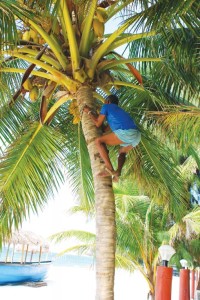
Another interesting feature is that in these islands women inherit the properties of the parents. In Minicoy, the husband even adopts the name of his wife’s family. In Agatti and Kavaratti, the inherited property is distributed among all the members of the joint family. After marriage women look after the entire household affairs. The husband has to pay a fixed amount to the wife for maintenance every year. If he does not do so, the wife can ask for divorce and she can even get it. After divorce the woman can easily remarry. On certain islands for all social work women have to come forward. They organise the people for performing specific jobs. Thus women have a different status on the islands.
Sources of income

Main sources of income for the island people are coconut cultivation, coir twisting and fishing. However, people of the islands are generally poor, although good quality coconuts are produced there. But on account of inadequate transport infrastructure they are unable to take them to the mainland markets. They have to depend on middlemen who make huge profits at their cost. Same is the case with fishing. Fish caught there have markets mainly in the mainland or are exported. The same transport facility becomes an impediment and the island people do not get remunerative price. Recently, the Government of India and the Union Territory administration have started processing, preservation and packaging facilities for the fishes in the islands. That is expected to boost the income of the local people who are engaged in fishing.
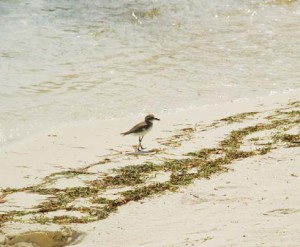
In recent years, tourism is expanding on the islands. Tourists from inside the country and outside are interested in visiting the islands. However, considering the fragile nature of the environment there are strict restrictions on the number of visitors to the islands. Every visitor has to obtain special permit to enter the islands. Air service between the mainland and Agatti is helping in making tourism industry more attractive. Otherwise people had to travel by sea route only, which meant spending several hours at sea to reach the islands from the mainland. However, even now many tourists prefer to take the sea journey to enjoy the spectacular beauty of the islands. For them, tour packages by ships are available. In 1962, a ship with the name MV Sea Fox was introduced. Later three more ships were pressed into service. They carry tourists as well as regular passengers. The Lakshadweep Samudram is a five-day tour package. The package takes the tourists by the ship named MV Kavaratti to the islands of Kavaratti, Kalpeni and Minicoy. The package includes lunch, refreshments and entertainment on the islands. Folk dance is organised for the tourists, who can also indulge in recreational activities like swimming, snorkeling and other water sports during the day. The visitors are taken on sightseeing of the islands. The Marine Museum, Tuna Factory, village walks are popular with the tourists. Nights are spent on the ship. There are cruise packages from Mumbai too which take tourists to Lakshadweep and back in fixed numbers of days.
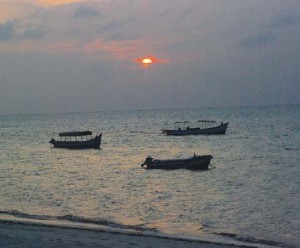
A dedicated organisation has been formed to encourage and facilitate development of tourism. The organisation works in close association with the local administration. Also, a well equipped water sport institute has been established at Kadmat island. The facility provides opportunities for canoeing, kayaking, parasailing, scuba diving, water skiing, wind surfing, yachting etc. The tourist facilities at Bangaram are quite popular among foreign tourists. The resort provides high quality stay, food, recreation and also water sport facilities. There are tourist huts at different islands which provide affordable services to the tourists, including food.
Occupation
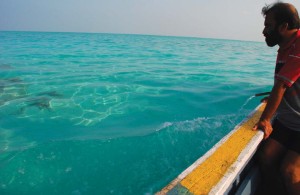
As the islands have tropical climate, coconut trees are found in abundance. Some are quite tall while others are of dwarf variety. A variety of fruits grow on the islands. Laccadive micro, Laccadive ordinary, green dwarf are well known varieties. Marine life is equally rich. Different types of fishes are found there. They are consumed locally and also taken to the mainland for export. Sun drying of fishes is also practiced on the islands by hanging them on cloth lines or on the ground. The islands here have turquoise hued warm, clear water, white sand beaches and palm trees growing in abundance. Sparkling coral reefs under the pellucid waters are home to a variety of life forms. The warm, shallow waters of the lagoons provide good opportunities to view the fishes and other types of flora and fauna. One can see the rich underwater marine life in glass-bottomed boats, specially organised for tourists. Going in the sea in those boats is a unique experience as the underwater marine life is clearly visible. Corals, fishes, other animals, plants etc., can be easily seen.
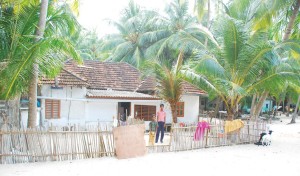
The islands and its vicinity are inhabited by large number of birds. One particular uninhabited island, Pitti has been declared a Bird Sanctuary. Crow is commonly found in Amini and Minicoy islands, but strangely, they are not present in Kavaratti. It is a common sight to spot several species of rare oceanic birds and migratory birds on these islands.
Animal habitat
A very important feature of Lakshadweep is that it has an amazingly large number of giant turtles in the shallow waters. Those turtles have a very long life span and scientists say that many of them are centuries old. Although these turtles are huge they do not attack humans. In fact one can swim with them, catch them and even ride on them. They are vegetarian and depend on sea vegetation for their survival.
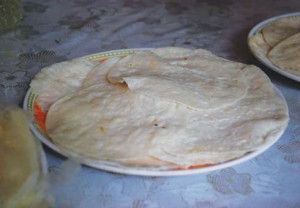
The money cowrie (scientific name: Cypraea moneta) is abundantly found in the shallow waters of the lagoons. During low tide, women and children enjoy collecting the cowries and other species of Cypraea genus. Beautiful wall hangings and other decorative items are made with cowries and people from the mainland buy them as souvenirs.
Jaggery making is an important income generation activity for the locals. Coconut tree sap is collected just like the datepalm sap which is heated in large containers. After removing water, the contents become thick and brownish. The same is allowed to cool to become jaggery, which is then packed in bottles or plastic pouches and sold. The jaggery is devoid of chemicals and is very tasty. Another important faunal member found in the vicinity of some of the islands is the sea urchin, which is also called as sea hedgehogs. They are small, spiny, globular animals which feed mainly on algae but they themselves are eaten by sea otters. If their population is large, these animals can devastate the habitat by way of consuming the algae which form the basis of the food chain in the aquatic habitats. As a result, fishes and other useful animals cannot survive. That is why the fishermen do not like them. They catch them and bury them in the sand so that they die. The shallow lagoon water around the islands in Lakshadweep are full of a variety of beautiful, colourful fishes such as the coral fish, parrot fish, butterfly fish, surgeon fish etc. These fishes can be viewed from the glass bottom boats or while diving and snorkeling.
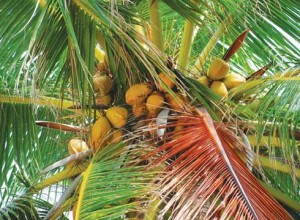
Life in Lakshadweep
Life in Lakshadweep is simple and easy. People are honest, god-fearing and very friendly. They are very good swimmers and seafarers. That is why many of them are easily employed by the shipping companies. The cuisine is also rich. Rice and fish are staple diet of the islanders. Chicken is also enjoyed. A variety of dishes are made from A local dish made of rice, which is the staple diet of rice. Banana is another item which is relished by the local population. However, availability of potable water has been a major problem for the inhabitants of these islands. Wells cannot be dug there as the islands are made of coral materials which are porous. Hence, sea water easily enters to fill any available space, including the wells. People try to collect rainwater as much as possible. Earlier they used to collect them in small ponds. Now many of the houses and other establishments have scientific rainwater harvesting and storage systems. Large tanks are used to store water during the rains and are used almost the year round. On some of the islands, the administration has installed plants for vacuum distillation of sea water into fresh drinking water. Few years back it was discovered that close to the shores there was substantial difference in the temperature of water at different depths. Warm water from sea is evaporated in large containers under low pressure to make water vapour. Cold water obtained from certain particular depths is used in the distillation equipments to cool the vapour. The vapour condenses into water. Obviously, the condensed water is not saline. Thus fresh water is made from saline sea water at low cost. That particular technique is now being expanded to meet the requirements of fresh water on different islands.
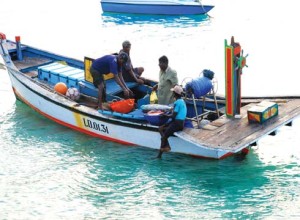
Sea erosion is yet another problem faced by the inhabitants of the island. In 1986 an expert committee was constituted to look at the risks of sea erosion. The committee was of the view that about 9.6 km of sea shore was in need of protection. In the later years, the length has increased on account of new observations and increasing sea erosion. About 36 km has been identified so far requiring protective measures. A large stretch has already been covered and further work is in progress. Large tripods made of cement are commonly used to break the force of the waves which cause erosion. Such tripods can be seen on various islands. At some vulnerable points walls have also been erected. The unparalleled beauty of Lakshadweep makes it a place worth visiting again and again. Its serene atmosphere, simple lifestyle, indigenous food draws visitors from all over the world to this paradise offering them an out of the world experience.

